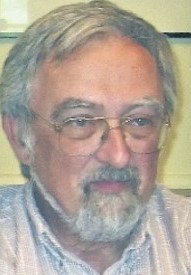In Memoriam
Queen’s remembers Professor James Mason
June 6, 2023
Share
 The Queen’s community is remembering James (Jim) Mason, a long-time professor in electrical and computer engineering and the inaugural associate dean for first-year studies in the Faculty of Engineering and Applied Science, who died March 18, at the age of 75.
The Queen’s community is remembering James (Jim) Mason, a long-time professor in electrical and computer engineering and the inaugural associate dean for first-year studies in the Faculty of Engineering and Applied Science, who died March 18, at the age of 75.
Dr. Mason earned his PhD at Queen’s in Electrical and Computer Engineering and then taught at universities in Australia and New Zealand before returning to Kingston.
Early in his time at Queen’s, Dr. Mason and faculty colleagues Sid Penstone and Lloyd Peppard, formed a university-industry collaboration with Bell Northern Research (later Northern Telecom) to enable graduate students to have their microchip designs prototype-manufactured at one of Canada’s leading industrial fabrication facilities. The collaboration was so successful that in 1984 it resulted in the creation of the not-for-profit organization Canadian Microelectronics Corporation, now known as CMC Microsystems. CMC enabled the network’s groundbreaking work by managing the university-industry projects, and through two other novel activities: sourcing, loaning and supporting industry-calibre equipment for enabling excellent research, and – years ahead of the internet – facilitating cross-country collaboration and knowledge-sharing via electronic networks.
Today, the National Design Network links approximately 1,000 professors, 7,000 other innovators (from undergrads to postdoctoral fellows), and research staff at 54 institutions across Canada with more than 600 industry collaborators (including at least 50 NDN startups), more than 30 fabrication partners, and numerous related national and international organizations. NDN innovations span electronics and computing to health care, energy, the environment, transportation, and aerospace.
Dan Gale, former president of CMC Microsystems said that Dr. Mason was “instrumental in establishing research links at MIT and U.S. corporations and he was an envoy for Canadian activity helping to forge links with others – including similar talent formation and prototyping initiatives that had taken place around the world.”
In another important project for Queen’s, Dr. Mason, along with James McCowan, a professor in the Department of Chemistry, were key contributors to the development of the concept of integrated learning for the Faculty of Engineering and Applied Science, and in designing a new type of facility – the Integrated Learning Centre – to support student learning. Both professors believed that first year engineering should be organized and delivered as a program, and not as a collection of courses. This led to substantial changes in the first-year program – including the introduction of group and teamwork projects with significant community impacts. These projects brought focus to the development of professional skills early in students’ engineering studies. Peer mentoring by upper-year students was also introduced. Shortly after, Dr. Mason was appointed as the inaugural associate dean of first-year studies.
Outside of his work to support student learning and research Dr. Mason was actively involved in the governance of the Campus Bookstore. He was president of QUESSI for 10 years – the non-profit corporation that has owned and operated the Campus Bookstore since 1963. Former general manager, Chris Tabor said that Dr. Mason was instrumental in QUESSI’s lobbying of the federal government to ensure that students had access to courseware, and that “Jim was a long-range thinker who always considered long-range implications of decisions.” With QUESSI leadership, the precursor to campus-ebookstore.com was formed. Today, this organization works with hundreds of institutions and publishers in Canada and the United States to provide for the distribution of digital course materials.
“Jim was a fierce advocate for student agency,” says Tom Harris, former Dean of the Faculty of Engineering and Applied Science. “This was seen in the impact of his contributions in CMC MicrosSystems, the development of the Integrated Learning Initiative and Beamish-Munro Hall and his leadership on the Campus Bookstore. He understood the forces of inertia and the need to challenge the status quo in engineering education. He had a thoughtful and collaborative approach to leadership and change.”
A celebration of his life will take place this summer.